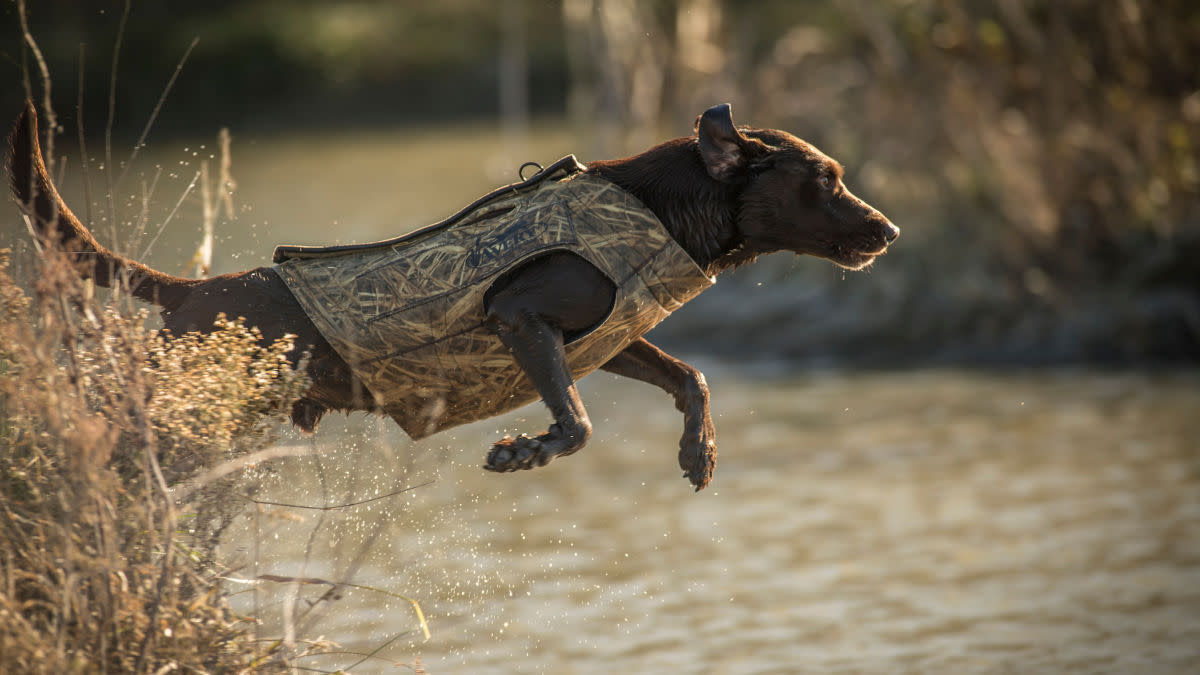
The hunting dog world is full of stereotypes and generalizations—none more entrenched in the bird hunters’ zeitgeist than the perceived differences between British and American Labrador retrievers. It’s commonly believed that British (or English) Labs are smaller, stockier, quieter, more easily trained, and not quite as energetic as their American counterparts. Arguments about superior intelligence, scenting ability, and overall hunting ability are easy to find for both strains, with so much contradiction between rumors that it doesn’t make sense to separate these dogs into different categories.
You might be able to find some trends if you studied enough Labs side by side, but broadly speaking, it’s not as simple as some suggest. According to Mike Stewart, trainer and president of Wildrose International, a respected British Lab kennel, there is no difference. “Genetically, British and American Labs are exactly the same. You have to get into different bloodlines and pedigrees to see dogs that fit into the typical categories of either side.”
Just like buying a Lab based on coat color, if you choose a dog solely on the country of origin, you’re paying for something that doesn’t have any real bearing on health, intelligence, biddability, or athleticism. It’s purely an aesthetic decision. So why pay attention to the difference at all?
It’s all in the breeding, and across the pond they’ve been pretty stringent on how they propagate their Labs. A pedigreed Lab bred in the United Kingdom has a better chance of living up to the generalizations much more than a British Lab from the states. The selectively bred, traditional style in the UK often produces quiet, calm dogs that are highly trainable, with a nose that can not only suss out pheasants, but also blood trail big game.
Here in the states, the role of a British Lab might encompass shed hunting, waterfowl and upland hunting, service, or simply house pet. You could find dual purpose hunting and adventure dogs like those that Stewart and company put out at Wildrose, or a Lab that is expected to do nothing more than retrieve tennis balls and lay on the couch all day. Dogs like the latter still may be considered British, but they aren’t going to impress your hunting partners a whole lot in the field.
Such is the case with American Labs as well. The spectrum covers all types of dogs in the category, and while you can say that retrievers here are high-drive, bigger Labs that can handle late-season ducks in choppy, near-freezing waters, that means nothing until you get into individual bloodlines. There are plenty of American Labs that can’t—or won’t—do any of those things well.
A British or American Lab may fully live up to the stereotypes, or seem to disprove them. It always boils down to individual bloodlines. It should come as no surprise that generations of selective, deliberate breeding in the traditional English style will often produce high performing dogs. The same goes for quality American Labs from long lines of Field Trial and Hunt Test champions. Performance will come not from being either British or American, but the lineage of an individual dog’s pedigree.
Or look at it another way: a Lab being British or American doesn’t mean a whole lot. It’s what an individual dog has been bred for over multiple generations that will influence the performance attributes that matter. While you may want to start your search at British or American due to personal preference for appearance, understand that the bulk of what makes a dog great (or not so great) is the result of generations of pairings between dogs with desirable traits—no matter what country they hail from.
Feature image via John Hafner.





Conversation